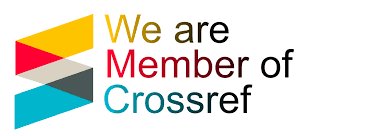RENEWING ENGLISH TERMINOLOGY IN PERFUMERY AND COSMETICS
DOI:
https://doi.org/10.63034/esr-115Keywords:
Cosmetics industry, Perfumery, Terminology, Lexical innovations, Technical progressAbstract
This article explores the processes and methods of integrating new terminology into the English lexical set associated with the production of perfumes and cosmetics. The purpose of this article is to analyze the processes and factors influencing the replenishment and evolution of the English-language terminological vocabulary in the perfumery and cosmetics industry. The research focuses on exploring how new technologies, global cultural interactions and changes in consumer preferences contribute to the formation and adaptation of specialized vocabulary in this industry. The work reveals the mechanisms of linguistic innovation in the context of a rapidly developing industry.
References
Nikiforova, N.Y., Gavrilyuk O.O., & Galitskaya E.A. (2019). The register of names of perfumes
and cosmetics as a reflection of social stratification.
Biletskaya, T., Galitskaya E. (2021). The interaction of nomination types in the sphere of perfumery and cosmetic naming.
Binder, Si. (2022). The impact of globalization on specialized Italian and German languages:
Anglicisms in the language of beauty.
Gavrilyuk, O.O., Galitskaya E.A. (2020). Intentionality and acceptability as standards of textuality in the names of perfumes and cosmetics.
Felber, M. (2002). Terminology Manual: Paris: UNESCO, Inform, 426 [in English].Kohli, C., Suri, R. (2000). Brand Names that work: A study of the Effectiveness of Different
Types of Brand Names. Marketing Management Journal, 10(2), 112-120 [in English].
Jones, G. (2011). Globalization and Beauty: A Historical and Firm Perspective.
EUROAMERICA, 41(4), 885-916 [in English].
Doxit, S. (2009). Fine Fragrance Business Trends. Chemical Business, 23 (6), 11-26 [in English].
Chernatony, L., de Mc.Donald, M., Wallance, E. (2011). Creating Powerful Brands. New York:
Taylor and Francis, 268 [in English].
Geeraers, D. (2010). Theories of lexical semantics. Oxford: Oxford University Press, 341 [in
English].
Fauconnier, G., Turner, M. (2002). The way we think: conceptual blending and the Mid's Hidden Complexities: New York: Basic Books, 298 [in English].
Algeo, J., Algeo, K. (2000). Onomastics as an Interdisciplinary Study. Names, 148 (3/4), 265-
[in English].
Briot, E. (2007). Fashion Sprayed and Displayed: The Market for Re-perfumery in NineteenthCentury Paris. Proceedings of the Economic History Society Annual Conference: Exeter: University
of Exeter, 69-72 [in English].
Frisson, S., Pickering, M. (2007). Obtaining a figurative interpretation of a word: support for
underspecification. Metaphor and Symbol, 16, 149-174 [in English].
Gibbs, Raymend, W. (2001). Evaluating contemporary models of figurative language understanding. Metaphor and Symbol, 16, 317-333 [in English].
Anholt, S. (2003). Brand New Justice: the upside of global branding. Oxford: Butterworth
Heinemann, 272 [in English].
Geeraers, D. (2010). Theories of lexical semantics. Oxford: Oxford University Press, 341 [in
English].
Grossenbachen, P.G., Lovelce, C.T. (2001). Mechanisms of synaesthesia: cognitive and psychological contains. Trends cognitive science, 1(15), 36-41 [in English].
Brinker, K. (2011). Linguistic Text Analysis [Linguistische Textanalyse]. Berlin: Erich Schmidt,
[in German].
Briot, E. (2007). Fashion Sprayed and Displayed: The Market for Re-perfumery in NineteenthCentury Paris. Proceedings of the Economic History Society Annual Conference: Exeter: University
of Exeter, 69-72 [in English].
Doxit, S. (2009). Fine Fragrance Business Trends. Chemical Business, 23 (6), 11-26 [in English].
Published
How to Cite
Issue
Section
Categories
License
Copyright (c) 2024 Нитто Д.Н, Сулейменова Е

This work is licensed under a Creative Commons Attribution 4.0 International License.





